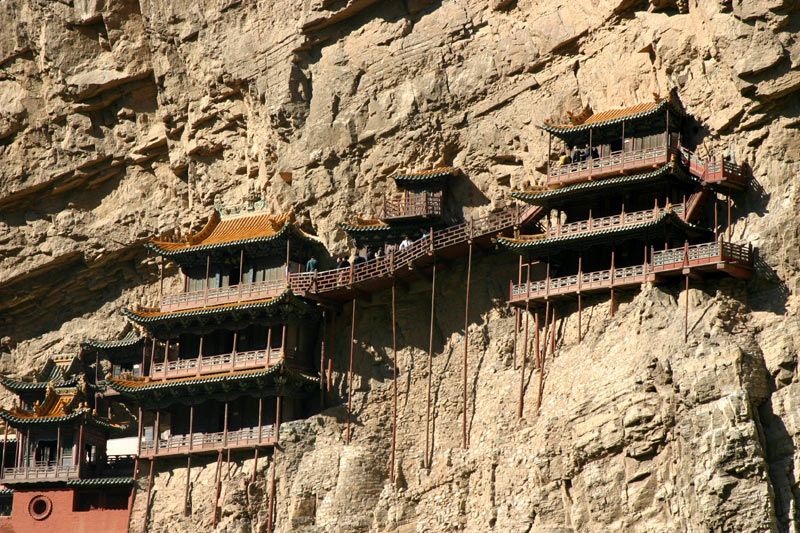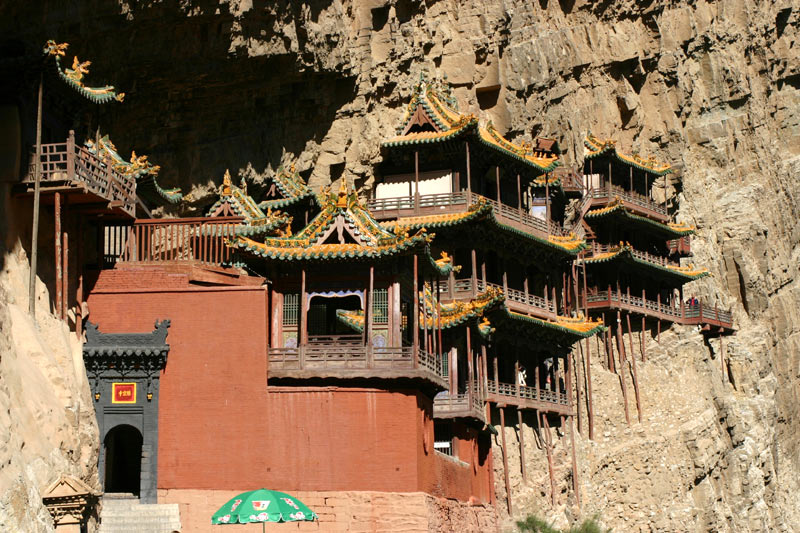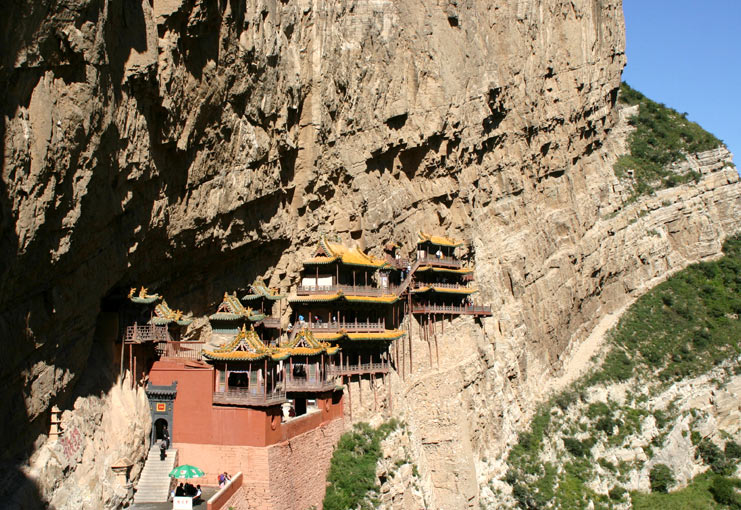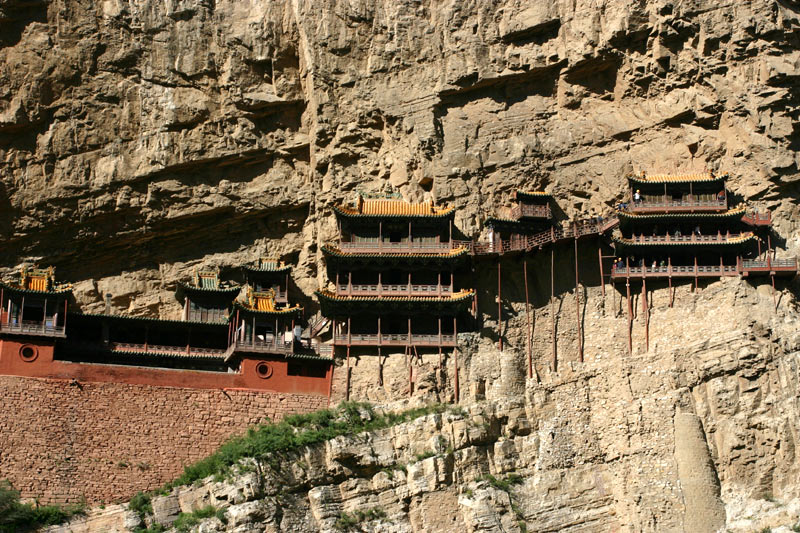Hengshan Mountain is located in Hunyuan County of Shanxi Province in northern China. It is the Northern Mountain of the Five Sacred Mountains. The Tianfeng Peak, the highest peak, is 2,190 meters above sea level, the highest among the Five Sacred Mountains.

Xuankong Temple Picture Sources:ccnpic.com
Cultural Heritage: Temples on the Cliff
Hengshan Mountain boasts many cultural relics like temples, sites of academy, steles and engravings, some of which occupy important positions in the development of China's ancient architecture, such as the Xuankong Temple, Yuanjue Brick Pagoda and Yongan Temple. The Xuankong Temple, built 1,400 years ago, hosts worship for the Taoists, Confucians and Buddhists. The temple is hung on the middle of the cliff and is still in perfect conditions after so many years.

Xuankong Temple Picture Sources:ccnpic.com
The Hanging Monastery, known in Chinese as Xuankong Temple, is a wonder of ancient Chinese architecture. Built on the sheer cliff face of Mt. Hengshan some 1,400 years ago, it is noted for its delicate layout and its rare shrine with statues from Taoism, Confucianism and Buddhism sitting together.
Besides the Xuankong Temple, many other temples are constructed on the cliffs or caved in just like castles in the air, adding to steepness and grandiosity.
The temple clinging precariously half-way up the nearly vertical cliff. It looks as if the temple were supported by strong beams and vertical pillars thrusting below into man-made holes in the rocks. Spanning from south to north, the halls and pavilions are connected by narrow boardwalks, which form breathtaking views.

Xuankong Temple Picture Sources:ccnpic.com
The temple was first constructed during the Northern Wei Dynasty, in 491 A.D., and renovated in successive dynasties. But its original structure has not changed a lot in more than 1,000 years. A stretch of river from the Hengshan reservoir meanders its way through the gorge, adding more charm to the temple high above. The highest palace of the temple used to be 90 meters above the ground. But it currently stands at only 78 meters due to years of silt buildup on river bed . In the past, the area was often deluged with torrential rains. Local people thought there was a water monster provoking the river, so they built a temple in the hopes that Buddha's power might pacify it.
It is hard to imagine how this temple could endure for centuries -- even through earthquakes -- and remain in perfect condition. Unique natural location which played a major role in preventing the temple from weathering.
"It was built in the natural cove of Cuiping Peak of Hengshan Mountain. When it rains, the upper portion of the peak blocks the rain. When wind comes, the formation of the peak lessens its force. The surrounding peaks also provide protection against the radiation of the sun. So the average period of sunlight is less than three hours per day. All these favorable conditions keep the monastery from suffering natural erosion."

Xuankong Temple Picture Sources:ccnpic.com
In addition to this, the beams which hold up the temple are made of hemlock wood, also known as "iron shoulder poles" in folk lore. The wood was soaked in tung oil to prevent insects and weather corrosion.
Having admired its extraordinary appearance from the outside. The gate of the temple is approached by a stone staircase that was chiseled in the rock face. Only after you stand on the boardwalks do you discover that the vertical pillars are only for decoration. If you don't believe me, just wobble them.
With an area of 152 square meters, the temple contains 17 palaces, with 11 Buddhist palaces, a Taoist one, and a specially-integrated one called the "Three Religions' Palace". The collection in the temple consists of nearly 80 statues made of bronze, iron, stone, wood and clay, mostly from the Ming Dynasty. You may even have the chance to see cloth-wrapped Buddhist statues, which weigh less than 2.5 kilograms each, in the main hall of the temple. Despite being built upon one of China's four most sacred Taoist mountains, the monastery has also had many other influences in its history. This is exemplified in the Three Religions' Palace, which is also the highest room in the temple. It got its name because it houses statues of the Sakhyamuni Buddha, Confucius, the great ancient Chinese philosopher and Laozi, the founder of Taoism, sitting side by side.
"Such a palace is rarely seen in China, because it could satisfy people's different religious faiths in ancient times. The Northen Wei Dynasty was founded by a relatively weak nomadic ethnic minority. In order to control the whole of China, the emperor had to learn from the culture of the Han people, which made up the majority of the country's total population. They believed in Taoism and Confucianism, so the emperor combined his dynasty's Buddhism beliefs with the other two in this palace for the sake of political stability."
The amazing building also works its charm on foreign tourists. (CCNPIC Nancy Wu)
(Article Resource: www.ccnpic.com)